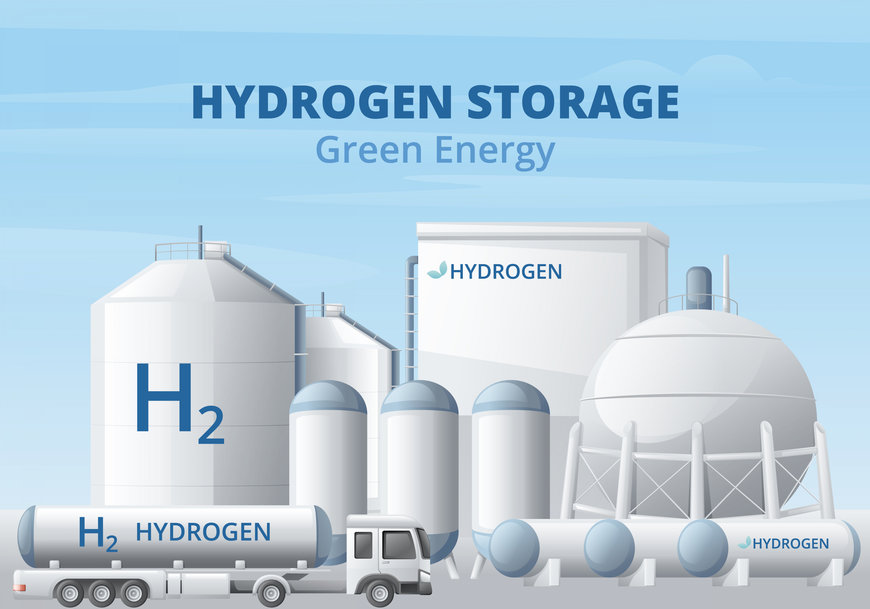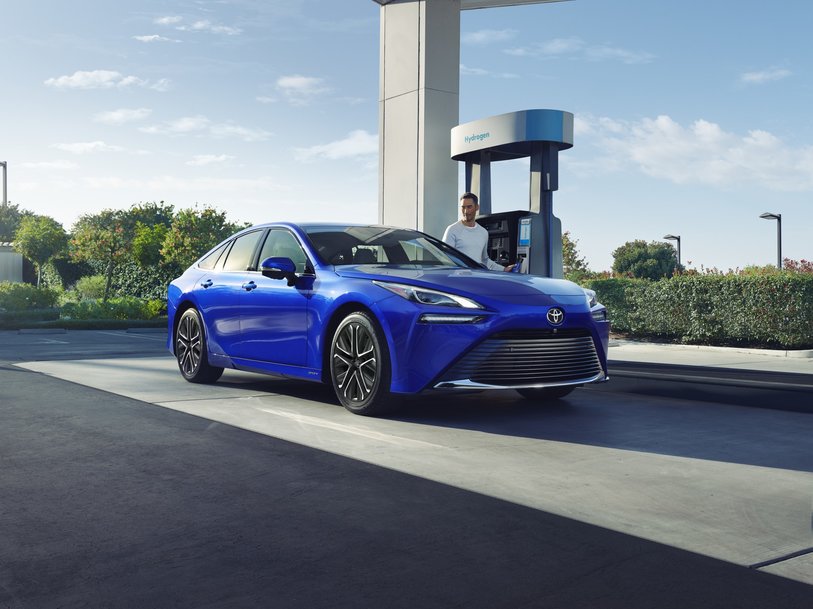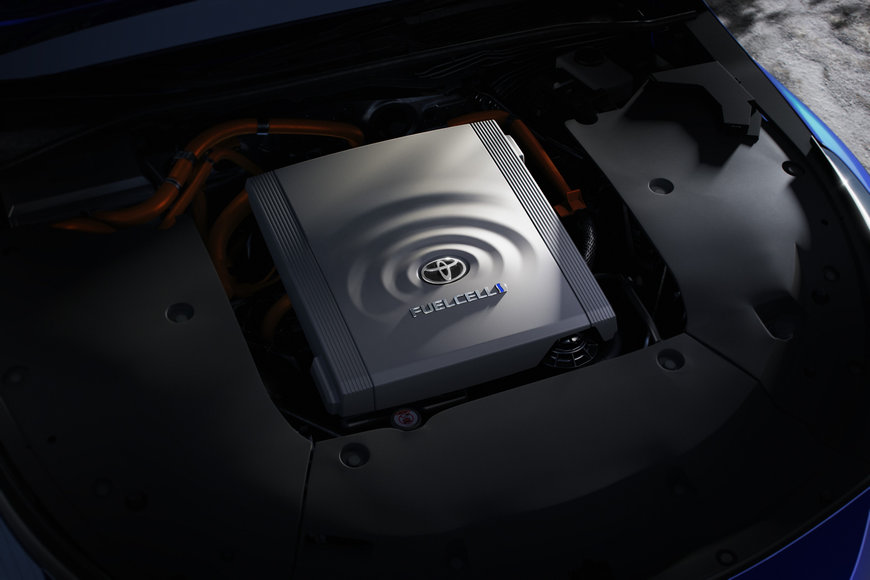www.auto-innovations.net
11
'24
Written on Modified on
MEDIAWORLD
THE FUTURE OF MOBILITY – EVS, HYDROGEN AND E-FUEL
Milton D’Silva examines the pros and cons of mobility of the future with the three available options.

Transportation is a leading contributor to greenhouse gas emissions. Photo by ALE SAT on Unsplash
By most accounts, humans learned to light fire around 2 million years ago and set in motion the wheels of progress. The wheel, by the way, was invented much later, in the 4th millennium BC. Ever since, the use of energy has been central to all human activity and has become the index of development – the more developed a nation, the more energy it uses. This unbridled use of energy has a side effect – the generation of greenhouse gases (GHGs) – which has today snowballed into a major crisis. While GHGs are essential to maintaining the right temperatures on earth, it is the excess caused by unbridled use of energy that has caused the crisis of global warming. The burning of fossil fuels, mainly hydrocarbons like coal and petroleum products, is today the largest contributor to global climate change, accounting for over 75 percent of GHG emissions and nearly 90 percent of all carbon dioxide emissions. The world is now warming faster than at any point in recorded history. The warmer temperatures are disrupting the usual balance of nature, changing the natural weather patterns the world has experienced for centuries. The year 2023, it may be noted, has turned out to be the hottest year in recorded history. This poses many risks to human beings and all other forms of life on Earth.
At 28%, transportation is a leading contributor to GHGs. This is the direct result of the combustion of fossil fuels in the different types of engines used to power various modes of transportation like cars, trucks, ships, trains and aircraft. With over 90% of the energy sources used in transportation originating from fossil fuels, it is obvious the world must now have cleaner alternatives to them. It is not just transportation, but use of energy as a whole, because electricity generation contributes another 25% of GHGs. Although the proportion is slightly lower than transportation, the energy landscape is marked by its own challenge – more than 60% of electricity generation still relies on fossil fuels. This dual reliance on fossil-based energy in both transportation and electricity generation underscores the urgent need for transformative changes to address the environmental consequences.

The world is now warming faster than at any point in recorded history. Image by nuraghies on Freepik
Given the close relationship between energy and mobility, the world is today engaged in a massive exercise seeking to decarbonise transportation and electricity generation, which holds immense potential to address the burgeoning global climate crisis. By transitioning to cleaner and more sustainable energy sources, such as renewables and alternative fuels, there is significant potential to reduce GHG emissions, making a substantial and positive impact on the fight against climate change. To this end, there has to be a concerted effort with close coordination among policymakers, industries and individuals, to prioritise and invest in initiatives that promote the decarbonisation of these critical sectors to achieve a more sustainable and resilient future.
Alternatives to fossil fuels have always been there and some of the better known and also in use, though not as widely, are bio-diesel, bio-alcohol, bio-gas, chemically stored electricity, hydrogen, non-fossil methane and natural gas, vegetable oil, and in recent years, synthetic fuels or e-fuels.
Decarbonising transportation & energy
The early automobiles were actually battery-powered Electric Vehicles (EVs) and were doing reasonably well before the mass-produced Ford Model T gained immense popularity. The EVs of that era simply could not counter the performance of the IC engine, especially after they got the self-start feature. Thus went the early EV into a long period of hibernation, only to be woken up after the oil shocks of the late 1960s and early 1970s. The EV was further jolted into action by the climate crisis of recent years. The renewed interest in EVs was ignited in part due to the Lunar Roving Vehicle ferried to the moon by the 1971 Apollo 15 mission, and research on the batteries had resulted in better capacities even as the cost remained high. The first serious boost to EVs was provided by the CARB mandate in the US State of California in the 1990s, which specified that automakers sell a small number of lower-emission vehicles, with zero emission being the ultimate goal. In response, several mainstream automobile companies either converted an existing model, or developed a new one with an electric drivetrain. These were at best token attempts and no serious EV barring the General Motors EV1 and Toyota RAV4 EV resulted from it. However, the hybrid Prius launched by Toyota in 1997 attracted global attention and won several awards and accolades, clearing the path for a renewed interest in EVs. An important development during the first decade of the new millennium was the founding of Tesla Motors, a Silicon Valley startup in 2003, as an electric mobility and clean energy company.
In the span of 20 years since, almost all global automakers have at least one EV on offer, if not a portfolio of models to choose from. Global EV sales have risen dramatically, crossing the 10 million mark in 2022. The total EV sales more than tripled in three years, going from 4% in 2020 to 14% in 2022. The momentum further accelerated in 2023 with the total EV sales including plug-in hybrids totalling a whopping 14.2 million, an increase of over 35% over the previous year, which adds to close to 16% of total light vehicle sales globally. The scale of EV adoption is far from uniform and varies from region to country. In general, China leads the EV adoption rate, followed by Europe and the US.
In the meanwhile, the decarbonisation of electricity is already happening as close to 30% of global electricity today is produced from renewable sources. The International Renewable Energy Agency (IRENA) estimates that 90 percent of the world’s electricity can and should come from renewable energy by 2050. The best thing about electricity is its ability to integrate renewable sources like hydropower, which is a traditional source of clean energy, and now wind and solar, which are more recent renewable sources.
The UN Climate Action Plan lists out five reasons the world should accelerate the pace of decarbonising the energy mix, primarily led by clean electricity.
By most accounts, humans learned to light fire around 2 million years ago and set in motion the wheels of progress. The wheel, by the way, was invented much later, in the 4th millennium BC. Ever since, the use of energy has been central to all human activity and has become the index of development – the more developed a nation, the more energy it uses. This unbridled use of energy has a side effect – the generation of greenhouse gases (GHGs) – which has today snowballed into a major crisis. While GHGs are essential to maintaining the right temperatures on earth, it is the excess caused by unbridled use of energy that has caused the crisis of global warming. The burning of fossil fuels, mainly hydrocarbons like coal and petroleum products, is today the largest contributor to global climate change, accounting for over 75 percent of GHG emissions and nearly 90 percent of all carbon dioxide emissions. The world is now warming faster than at any point in recorded history. The warmer temperatures are disrupting the usual balance of nature, changing the natural weather patterns the world has experienced for centuries. The year 2023, it may be noted, has turned out to be the hottest year in recorded history. This poses many risks to human beings and all other forms of life on Earth.
At 28%, transportation is a leading contributor to GHGs. This is the direct result of the combustion of fossil fuels in the different types of engines used to power various modes of transportation like cars, trucks, ships, trains and aircraft. With over 90% of the energy sources used in transportation originating from fossil fuels, it is obvious the world must now have cleaner alternatives to them. It is not just transportation, but use of energy as a whole, because electricity generation contributes another 25% of GHGs. Although the proportion is slightly lower than transportation, the energy landscape is marked by its own challenge – more than 60% of electricity generation still relies on fossil fuels. This dual reliance on fossil-based energy in both transportation and electricity generation underscores the urgent need for transformative changes to address the environmental consequences.

The world is now warming faster than at any point in recorded history. Image by nuraghies on Freepik
Given the close relationship between energy and mobility, the world is today engaged in a massive exercise seeking to decarbonise transportation and electricity generation, which holds immense potential to address the burgeoning global climate crisis. By transitioning to cleaner and more sustainable energy sources, such as renewables and alternative fuels, there is significant potential to reduce GHG emissions, making a substantial and positive impact on the fight against climate change. To this end, there has to be a concerted effort with close coordination among policymakers, industries and individuals, to prioritise and invest in initiatives that promote the decarbonisation of these critical sectors to achieve a more sustainable and resilient future.
Alternatives to fossil fuels have always been there and some of the better known and also in use, though not as widely, are bio-diesel, bio-alcohol, bio-gas, chemically stored electricity, hydrogen, non-fossil methane and natural gas, vegetable oil, and in recent years, synthetic fuels or e-fuels.
Decarbonising transportation & energy
The early automobiles were actually battery-powered Electric Vehicles (EVs) and were doing reasonably well before the mass-produced Ford Model T gained immense popularity. The EVs of that era simply could not counter the performance of the IC engine, especially after they got the self-start feature. Thus went the early EV into a long period of hibernation, only to be woken up after the oil shocks of the late 1960s and early 1970s. The EV was further jolted into action by the climate crisis of recent years. The renewed interest in EVs was ignited in part due to the Lunar Roving Vehicle ferried to the moon by the 1971 Apollo 15 mission, and research on the batteries had resulted in better capacities even as the cost remained high. The first serious boost to EVs was provided by the CARB mandate in the US State of California in the 1990s, which specified that automakers sell a small number of lower-emission vehicles, with zero emission being the ultimate goal. In response, several mainstream automobile companies either converted an existing model, or developed a new one with an electric drivetrain. These were at best token attempts and no serious EV barring the General Motors EV1 and Toyota RAV4 EV resulted from it. However, the hybrid Prius launched by Toyota in 1997 attracted global attention and won several awards and accolades, clearing the path for a renewed interest in EVs. An important development during the first decade of the new millennium was the founding of Tesla Motors, a Silicon Valley startup in 2003, as an electric mobility and clean energy company.
In the span of 20 years since, almost all global automakers have at least one EV on offer, if not a portfolio of models to choose from. Global EV sales have risen dramatically, crossing the 10 million mark in 2022. The total EV sales more than tripled in three years, going from 4% in 2020 to 14% in 2022. The momentum further accelerated in 2023 with the total EV sales including plug-in hybrids totalling a whopping 14.2 million, an increase of over 35% over the previous year, which adds to close to 16% of total light vehicle sales globally. The scale of EV adoption is far from uniform and varies from region to country. In general, China leads the EV adoption rate, followed by Europe and the US.
In the meanwhile, the decarbonisation of electricity is already happening as close to 30% of global electricity today is produced from renewable sources. The International Renewable Energy Agency (IRENA) estimates that 90 percent of the world’s electricity can and should come from renewable energy by 2050. The best thing about electricity is its ability to integrate renewable sources like hydropower, which is a traditional source of clean energy, and now wind and solar, which are more recent renewable sources.
The UN Climate Action Plan lists out five reasons the world should accelerate the pace of decarbonising the energy mix, primarily led by clean electricity.
- Renewable energy sources are everywhere – With over 80% of the world’s population dwelling in countries that are net importers for fossil fuels, volatility in fuel prices and global flashpoints add to their energy anxieties. Time they exploit renewable energy sources in their own backyard to get rid of import dependency.
- Renewable energy is cheaper – Growing adoption and economies of scale are causing prices of renewable energy sources drop dramatically. Estimates suggest cheaper electricity from renewable sources could provide 65 percent of the world’s total electricity supply by 2030 and could decarbonise 90 percent of the power sector by 2050.
- Renewable energy is healthier – Statistics from the World Health Organisation (WHO) indicate about 99 percent of people in the world breathe air that exceeds air quality limits and threatens their health, causing up to 13 million deaths. Clean energy sources help clean the atmosphere as well.
- Renewable energy creates jobs – The International Energy Agency (IEA) estimates that the transition towards net-zero emissions will lead to an overall increase in energy sector jobs, outpacing the job losses caused by the decline in fossil fuel production and distribution channels.
- Renewable energy makes economic sense – Governments across the world spend about $7 trillion annually subsidising fossil fuels. On the other hand, even conservative estimates suggest just about $4 trillion a year needs to be invested in renewable energy until 2030 – including investments in technology and infrastructure – to allow the world to reach net-zero emissions by 2050.
Are EVs the only solution for clean mobility?
How clean is the EV in terms of the environmental impact? At a time when the adoption of EVs is showing healthy growth are there doubts raised in certain quarters about the viability of the model? Japanese automaker Toyota, one of the global leaders in automobiles, has always been sceptical of EVs being touted as the only solution for clean mobility. While critics are quick to point out that in its passion to promote hybrids Toyota has neglected research on EVs, the company has a more nuanced approach. In January 2024, Toyota chairman Akio Toyoda speaking at an industry event in Tokyo was emphatic that electric vehicles should not be developed to the exclusion of other technologies, such as hybrid and hydrogen-powered cars. According to him, EVs will only reach 30% market share at most with the rest taken up by hybrids, hydrogen fuel cell and conventional IC engine cars albeit with synthetic fuels.
Akio Toyoda may not be wrong. Car buyers in the US are not as enthusiastic about EVs after the initial response and high initial cost and range anxiety are not the only reasons for that. Tesla is offering discounts on its vehicles; Ford is scaling back on production estimates for EVs and even German major Audi is having second thoughts. This comes within months of most automakers on either side of the Atlantic declaring their intention to go total electric by 2035.
In the US, for example, the National Automobile Dealers Association (NADA), the national voice of franchised new-car dealerships, their employees and their customers for over 100 years, is opposed to the Biden Administration’s proposed new emissions standards. In May 2023, the US Environmental Protection Agency (EPA) proposed a rule for model years 2027-2032 light- and medium-duty vehicles that call for 60% of new vehicles sold in 2030 and 67.5% of new vehicles sold in 2032 to be EVs. Even the Alliance for Automotive Innovation, which represents automakers in the US, has stated that the EPA rule is ‘neither reasonable nor achievable in the time frame provided’.
More recently, the issue has assumed political overtones with the Republican-led House of Representatives voting in December 2023 to stall the Biden administration’s proposal. “While EVs may play a large role in the future of the auto industry, Washington should not discount other technologies like hydrogen, hybrids, and the internal combustion engine,” is what Republican Tim Walberg is reported to have said. Former President Donald Trump, a strong contender in the presidential race later this year, has also said he would reverse the electric vehicle rules.
Similarly, in March 2023, the European Union approved a landmark law to end sales of new CO2-emitting cars in 2035, but not before Germany got an exemption for cars running on e-fuels. The other country that made common cause with Germany in seeking exemption for e-fuels is Italy. The EU law requires all new cars sold to have zero CO2 emissions from 2035, and 55% lower CO2 emissions from 2030, versus 2021 levels. The targets are designed to drive the rapid decarbonisation of new car fleets in Europe. The European Commission has pledged, however, to create a legal route for sales of new cars that only run on e-fuels to continue after 2035, after Germany demanded this exemption, which offers a potential lifeline to traditional vehicles – although e-fuels are not yet produced at scale.
This only means that despite the popularity of EVs and their clearly demonstrated efficacy towards clean mobility, there are still efforts being made to explore other alternatives to fossil fuels.
The other clean alternatives – hydrogen and e-fuels
By now, the potential of hydrogen as an automotive fuel is well established. It was John Bockris, a chemistry professor who in the early 1970s described hydrogen as an economical and environmentally friendly substitute for fossil fuels to power automobiles. Today there are production vehicles from Toyota, Honda and Hyundai running on the roads in California, USA. German Group BMW is also testing Toyota fuel cells for its hydrogen cars, while Detroit major General Motors is doing the same with Honda technology. There are also hydrogen fuel cell-powered buses and trucks plying in many countries – the majority of them in China. Traditional manufacturers of heavy diesel and CNG engines like Cummins and FPT Industrial are also working on hydrogen-powered IC engines which are at trial stages and soon expected to be in series production. The emerging hydrogen economy has captured popular imagination and government support across the world.

The emerging hydrogen economy has captured popular imagination. Image by macrovector on Freepik
How clean is the EV in terms of the environmental impact? At a time when the adoption of EVs is showing healthy growth are there doubts raised in certain quarters about the viability of the model? Japanese automaker Toyota, one of the global leaders in automobiles, has always been sceptical of EVs being touted as the only solution for clean mobility. While critics are quick to point out that in its passion to promote hybrids Toyota has neglected research on EVs, the company has a more nuanced approach. In January 2024, Toyota chairman Akio Toyoda speaking at an industry event in Tokyo was emphatic that electric vehicles should not be developed to the exclusion of other technologies, such as hybrid and hydrogen-powered cars. According to him, EVs will only reach 30% market share at most with the rest taken up by hybrids, hydrogen fuel cell and conventional IC engine cars albeit with synthetic fuels.
Akio Toyoda may not be wrong. Car buyers in the US are not as enthusiastic about EVs after the initial response and high initial cost and range anxiety are not the only reasons for that. Tesla is offering discounts on its vehicles; Ford is scaling back on production estimates for EVs and even German major Audi is having second thoughts. This comes within months of most automakers on either side of the Atlantic declaring their intention to go total electric by 2035.
In the US, for example, the National Automobile Dealers Association (NADA), the national voice of franchised new-car dealerships, their employees and their customers for over 100 years, is opposed to the Biden Administration’s proposed new emissions standards. In May 2023, the US Environmental Protection Agency (EPA) proposed a rule for model years 2027-2032 light- and medium-duty vehicles that call for 60% of new vehicles sold in 2030 and 67.5% of new vehicles sold in 2032 to be EVs. Even the Alliance for Automotive Innovation, which represents automakers in the US, has stated that the EPA rule is ‘neither reasonable nor achievable in the time frame provided’.
More recently, the issue has assumed political overtones with the Republican-led House of Representatives voting in December 2023 to stall the Biden administration’s proposal. “While EVs may play a large role in the future of the auto industry, Washington should not discount other technologies like hydrogen, hybrids, and the internal combustion engine,” is what Republican Tim Walberg is reported to have said. Former President Donald Trump, a strong contender in the presidential race later this year, has also said he would reverse the electric vehicle rules.
Similarly, in March 2023, the European Union approved a landmark law to end sales of new CO2-emitting cars in 2035, but not before Germany got an exemption for cars running on e-fuels. The other country that made common cause with Germany in seeking exemption for e-fuels is Italy. The EU law requires all new cars sold to have zero CO2 emissions from 2035, and 55% lower CO2 emissions from 2030, versus 2021 levels. The targets are designed to drive the rapid decarbonisation of new car fleets in Europe. The European Commission has pledged, however, to create a legal route for sales of new cars that only run on e-fuels to continue after 2035, after Germany demanded this exemption, which offers a potential lifeline to traditional vehicles – although e-fuels are not yet produced at scale.
This only means that despite the popularity of EVs and their clearly demonstrated efficacy towards clean mobility, there are still efforts being made to explore other alternatives to fossil fuels.
The other clean alternatives – hydrogen and e-fuels
By now, the potential of hydrogen as an automotive fuel is well established. It was John Bockris, a chemistry professor who in the early 1970s described hydrogen as an economical and environmentally friendly substitute for fossil fuels to power automobiles. Today there are production vehicles from Toyota, Honda and Hyundai running on the roads in California, USA. German Group BMW is also testing Toyota fuel cells for its hydrogen cars, while Detroit major General Motors is doing the same with Honda technology. There are also hydrogen fuel cell-powered buses and trucks plying in many countries – the majority of them in China. Traditional manufacturers of heavy diesel and CNG engines like Cummins and FPT Industrial are also working on hydrogen-powered IC engines which are at trial stages and soon expected to be in series production. The emerging hydrogen economy has captured popular imagination and government support across the world.

The emerging hydrogen economy has captured popular imagination. Image by macrovector on Freepik
The other alternative – synthetic fuels or e-fuels – is also relying on hydrogen basically. E-fuels are produced through a process known as the Fischer-Tropsch synthesis, where hydrogen is combined with CO2 extracted from the air and converted into a liquid energy carrier, which is a synthetic hydrocarbon fuel, or e-fuel. The hydrogen used to produce the e-fuel is generated by the electrolysis process that breaks down water into its components of hydrogen and oxygen, and to that extent, it is the same process that produces hydrogen for fuel cell electric vehicles (FCEVs) or other industrial applications. Here it is important to understand that the electricity used to produce hydrogen must be renewable, because using electricity generated from fossil fuels defeats the very purpose of the exercise. The burning of e-fuel in IC engines results in emissions, but the carbon dioxide thus emitted is less that used in producing it, and hence considered carbon neutral, or better still, emitting less CO2 than fossil fuels.
Those who are espousing the cause of e-fuels have formed the eFuel Alliance, an interest group committed to promoting political and social acceptance of e-fuels and to securing their regulatory approval. The alliance represents more than 170 companies, associations and consumer organisations along the e-fuel production value chain.
At this point, one may ask why use hydrogen to produce e-fuels when the same can be used for FCEVs? Or for that matter why use FCEVs when EVs are already popular and serving the purpose well? To understand that, one must study the pros and cons of each of these alternatives – EVs, Hydrogen and E-fuels.
The case for and against EVs
Among the three options that form the theme of this article, electric vehicles or EVs are generally considered cleaner than traditional gasoline cars in terms of environmental impact. However, it's important to note that the overall efficiency of an electric vehicle depends on various factors, including how electricity is generated, the manufacturing process, and the lifespan of the vehicle.
While zero tailpipe emissions during operation is the biggest advantage of EVs, the actual environmental impact of the EV depends on the source of the electricity used for charging. The full benefit accrues only if the electricity comes from renewable sources. If the electricity is generated from fossil fuels, some or most of the environmental benefits are lost. Another major point is the environmental footprint of the manufacturing process, which is believed to be less for EVs than fossil fuel cars. But critics point out that the production of batteries for electric vehicles, in particular, involves mining and processing raw materials like lithium, cobalt, and nickel, and this is an area that has not been fully explored for its true impact. Add to that, the cost of battery replacement and the total lifespan cost with recycling.
In summary, while electric vehicles are generally cleaner in terms of direct emissions, the overall environmental impact depends on various factors. Efforts are being made to make both electric vehicles and the electricity grid more sustainable, and advancements in technology and recycling practices are helping address some of the challenges associated with electric vehicle production and end-of-life management.
Hydrogen and its overall impact on mobility
The comparison between hydrogen fuel cell electric vehicles (FCEVs) and battery-operated electric vehicles (BEVs) involves various factors, and the superiority of one over the other depends on specific circumstances and priorities. In comparison with EVs, FCEVs offer key advantages like a longer range and quick refuelling – it takes only a few minutes to fill a hydrogen tank, whereas charging an electric vehicle can take significantly longer. Hydrogen fuel cells can also be lighter than large battery packs, which can contribute to better efficiency and handling in some cases. Above all, hydrogen fuel cells are highly suitable for hard-to-electrify mobility segments like heavy transportation, aviation and shipping.

The 2024 Toyota Mirai hydrogen fuel cell car. Photo source: Toyota Newsroom
However there are also challenges and concerns when it comes to the use of hydrogen, and these are mainly threefold:
- The infrastructure for producing, transporting, and dispensing hydrogen is currently limited compared to the widespread availability of electric charging stations.
- The production of hydrogen often involves energy-intensive processes, which can impact the overall efficiency and environmental benefits of hydrogen fuel cells.
- Hydrogen fuel cell vehicles are generally more expensive to produce than electric vehicles, primarily due to the cost of the fuel cell technology and the materials involved.
What about e-fuels?
At the heart of the argument in favour of e-fuels put forward by the eFuel Alliance are four main points:
At the heart of the argument in favour of e-fuels put forward by the eFuel Alliance are four main points:
- E-fuels have the potential to be carbon-neutral or even carbon-negative if the CO2 used in their production is sourced from the atmosphere or industrial processes
- E-fuels can be used in existing internal combustion engine vehicles with minimal modifications, and are ideal for hard-to-electrify segments mentioned earlier in favour of the hydrogen fuel cell
- E-fuels can leverage existing infrastructure for storage, transportation, and distribution, making it potentially easier to integrate them into the existing energy and mobility systems, and
- E-fuels can serve as a form of energy storage, as they can be produced when there is an excess of renewable energy.
Against the potential benefits of e-fuels mentioned above, there are some real challenges associated with the production of e-fuels, including the efficiency of the conversion processes and the overall energy losses. The efficiency of converting renewable electricity into synthetic fuels needs improvement for these fuels to be a truly sustainable and scalable solution. Moreover, with the headstart enjoyed by EVs and the rapid scaling of charging infrastructure, it will be interesting to see whether there will be popular demand for e-fuels, if and when there is production with scale.

The fuel cell of the Toyota Mirai. Photo source: Toyota Newsroom

The fuel cell of the Toyota Mirai. Photo source: Toyota Newsroom
Summing up
In conclusion, the choice between battery-operated electric vehicles, hydrogen-powered fuel cell vehicles and e-fuels as the third alternative, shall depend on individual preferences, regional infrastructure, and specific use cases. All three technologies have their merits and challenges, and ongoing advancements may continue to shape the landscape of sustainable transportation. Above all, rapid decarbonisation of electricity is essential for the success of these options.
References
1. https://www.efuel-alliance.eu/
2. https://industry-india.com/market-overview/69893-are-we-really-done-with-ic-engines
3. https://pressroom.toyota.com/advanced-to-the-core-toyota-mirai-offers-an-electrifying-ride/
4. https://www.industryemea.com/market-overview/75637-the-green-hydrogen-path-to-net-zero

